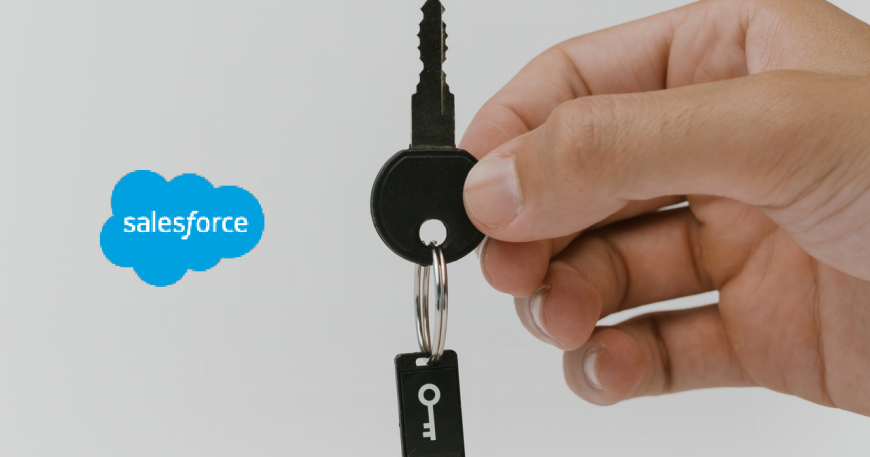Salesforce data security often confuses people since it is highly configurable. This CRM platform lets you tweak and customize its security features in great detail. Once you manage to wrap your head around Salesforce data security, you will realize that Salesforce’s approach to securing your data is amazing.
Data security has become a big deal ever since remote work has become more common (thanks to the pandemic). Companies need to take measures to ensure that their CRM platform remains safe from malicious parties and any occurrences that could compromise the integrity of their data. In order to keep your Salesforce CRM secure, you need to develop an understanding of how Salesforce handles data security and what Salesforce security best practices you should follow.
Why should you be concerned about Data Security?
CRM platforms often contain sensitive data about your business dealings with your customers. Keeping this data is safe is important since it can reveal a lot about your company. Apart from safeguarding your information on your business practices, you should also worry about maintaining the quality and integrity of your data.
Since data has become an important part of modern-day business, companies should invest time and resources in making sure that their data remains secure. The last thing you want is to have your CRM data leaked to a competitor. Luckily, Salesforce takes cyber security quite seriously. The CRM platform has robust security features that you can configure on your own, or have them configured by Salesforce development experts.
Salesforce Data Security
Like we have mentioned above, Salesforce has highly configurable security. You can control who can access your data, who can see it, and who can edit it. Salesforce lets you set read and write exceptions and fine-tune permission settings on different levels. You can further enhance your Salesforce data security by having your Salesforce CRM customized.
Salesforce Services offered by Rolustech
[wptb id=32056]
Types of Security in Salesforce
Salesforce’s way of handling data plays a role in determining how it secures data. In Salesforce, data is stored at three levels. There are objects, which are basically tables in a database. Then there are fields in every object, these fields are columns in a table. The third level consists of records, which are rows in each field.
Salesforce offers security at each data storage level:
- Object level security
- Field level security
- Record level security
Salesforce users can configure data security at each level. This means that you get a lot of control over your CRM data’s read and write capabilities. Each data storage level can be treated as an individual layer of security. What this means is that Salesforce data security consists of three configurable layers. Every layer has its own settings that you can tweak in order to maximize the security of your data.
Object Level Security
For every user, Salesforce verifies what objects they have access to. Object level security allows you to regulate access to different tables in your database. You can configure your object level security with the help of 2 settings: permission sets and profiles.
Profiles allow you to control access to object level and field level security. Permission sets can be used to further configure access in your profiles. You can use permission sets to grant special permissions to users inside of a profile. These 2 settings let you configure your object level security quite well.
Field Level Security
Your field level security determines what fields (columns) can be accessed in your objects (tables). You can use the profile setting to configure your field level security as well. You can control who can see certain fields and who cannot. You can also set who can edit certain fields within your tables.
Field level security lets you enhance your Salesforce data security by providing users with selective access to your data. This lets you follow Salesforce security best practices without having to create bottlenecks in your workflow.
Record Level Security
By default, Salesforce allows users to access records that they own (that were created by them). However, you can use record level security rules to configure how every user can access records in your database.
Salesforce’s record level security comes with a handful of rules that you can set for every user. This lets you greatly personalize the platform’s security according to your workflows and hierarchy. Record level security can be set to share ownership of records between multiple users. You can also set accessibility of records based on the data they hold or based on certain users’ roles in the company. The customizability that Salesforce record level security offers is great for boosting your data security.
Salesforce Data Security Best Practices
Just like with everything else, you can optimize your Salesforce data security by following a set of best practices. The exact cyber security process of a Salesforce CRM will vary depending on your company’s approach to data security. You can incorporate these best practices in order to make your Salesforce cyber security even more effective.
- If you haven’t done this in a while, make sure to carry out a Salesforce health check. Salesforce has its own health check tool that can be used to analyze your CRM platform. It can help you identify any shortcomings in your security and recommend best practices for data security. You can also get in touch with Salesforce experts and ask them for their support in improving your Salesforce data security.
- Two-factor authentication is an incredibly useful security feature that is built into salesforce. It can help enhance your platform’s overall security. Two-factor authentication requires users to authenticate themselves twice when logging in; once through a password and once through Salesforce’s authenticator app. Two-factor authentication is great for companies that have remote workers accessing their CRM platform.
- Salesforce lets you define a role hierarchy within the platform. This feature does more than just organize your CRM platform. Having a well-defined role hierarchy can improve your Salesforce cyber security by controlling data access based on a user’s role in the company.
Conclusion
There are a number of ways to maximize the Data security of your Salesforce CRM. Certain best practices are easy to implement, but some practices can be tricky. In order to maximize your CRM’s security, you should consider getting in touch with Salesforce consultants who can analyze your platform and come up with a plan of action for you.
Rolustech is an Official Salesforce Partner firm and has completed several projects in Salesforce Integration, Customization, Implementation, and more. Contact us now for a FREE Business Analysis. We will be glad to assist you!




